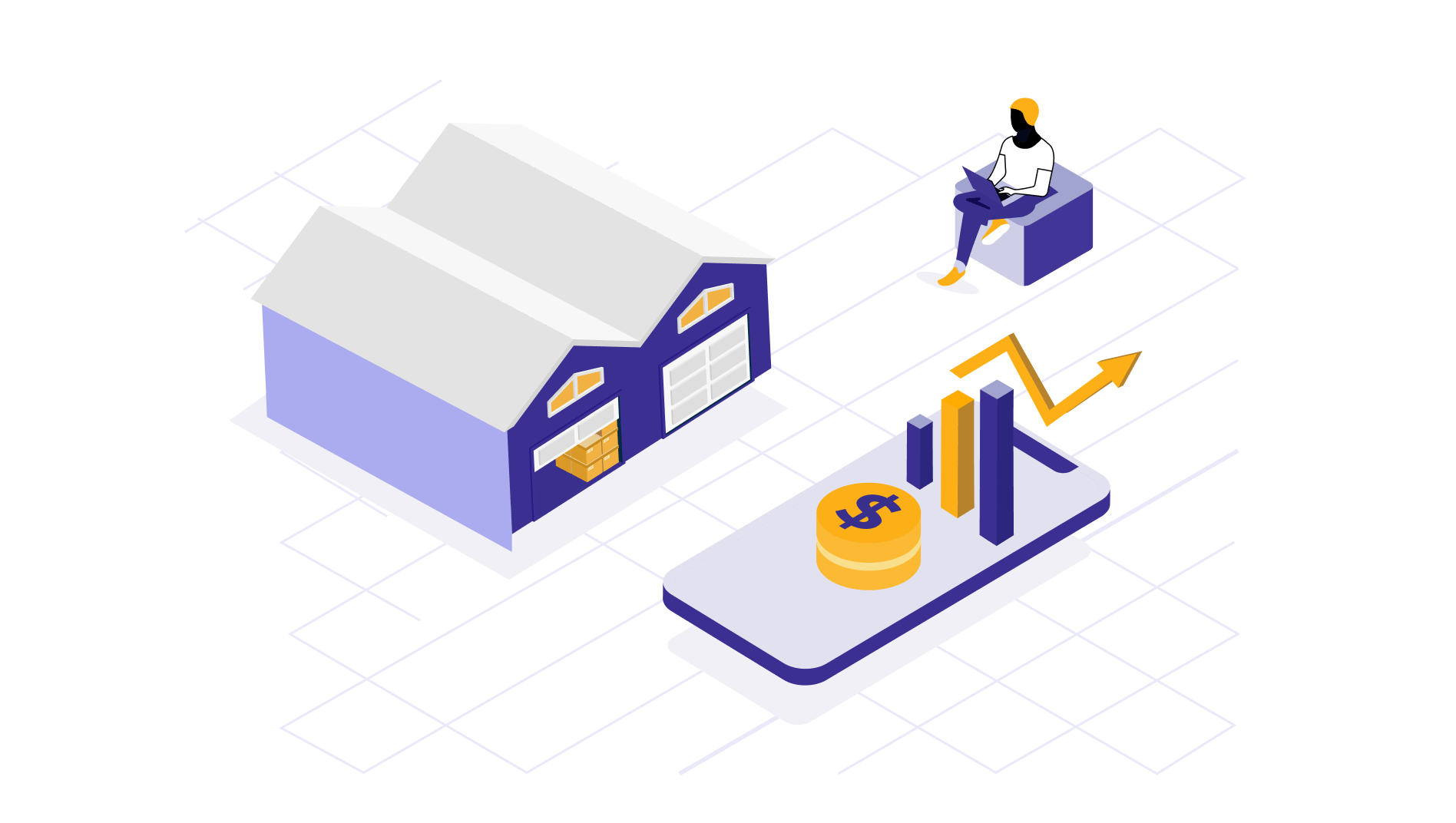Demand forecasting in manufacturing
Manufacturing forecasting has helped many lead companies keep pace with their supply requirements even in global disruptions like the pandemic. Here from our data science experts on why forecasting is important in manufacturing and how to get it right through the best data practices.

Ram
Oct 29, 2024 |
10 mins

What’s demand forecasting in manufacturing?
Demand forecasting in manufacturing is the process of extracting predictive insights about future customer demands using historical data, analytics, statistical models, or machine learning. Knowing this ahead, manufacturers can plan their operations, labor management, machinery utilization, material availability, and supply chain more efficiently.
Think of a manufacturing plant which predicts its sales across multiple products, variations, and sizes. The granular level of insights could help them maintain accuracy across all levels - from raw materials purchase to reaching produce to distributors.
Importance of forecasting in production
Optimized inventory management — no stockouts, no unnecessary stockpiling.
Smarter resource allocation — machinery, labor, and materials aligned with production schedules.
Cost control — avoid emergency orders, overtime labor, or last-minute changes.
Customer satisfaction — meet demand on time and improve reliability.
Risk anticipation — prepare for demand fluctuations, supply chain issues, or raw material shortages.
In many ways, forecasting is the foundation of how to improve manufacturing productivity. By knowing demand in advance, manufacturers reduce wasted labor hours, run machinery more efficiently, and ensure resources are used where they add the most value.
Demand forecasting methods in manufacturing
Demand forecasting, one of the popular AI use cases in manufacturing, employs techniques like historical data analysis, time series analysis, qualitative forecasting, and advanced methods based on machine learning/AI models, like linear regression. Demand forecasting in manufacturing has a few specific methods to predict accurately the future demand.
Push systems
Push systems is more of a manufacturing method, also known as make-to-order method in manufacturing. This is the method where customer demand is forecasted ahead using statistical or ML models, which the production schedules follow. Three things happen when a company follows push system manufacturing.
Demand forecasting with the help of historical data, analytics, and machine learning.
Advanced production planning happens based on predicted demand and not on a real-time demand basis.
Produced goods sent to inventories, distribution centers, and retail points.
Push systems are best for manufacturing industries with predictable demands that often don't change, mainly food and beverages with mid to long shelf life.
The downside to push systems is that it could lead to overproduction and goods wastage, if the prediction results are not accurate.
Pull systems
Pull systems are the exact opposite of push systems, where the production and inventory supply is driven by customer demands. That is the inventory stocks are pulled out of the production demands based on immediate requirements. Here’s how pull systems work in manufacturing.
Based on real-time customer orders and doesn’t use forecasting for demand prediction.
Though production schedules don’t depend on forecasting, it can be employed for raw materials purchase, capacity management, and shift planning. Many manufacturers who follow pull systems still use demand forecasting to predict seasonal demands, so they could be prepared to meet periods of high and low demand.
Pull systems are effective for manufacturing companies with unpredictable demands or custom manufacturing requirements.
The disadvantages of the pull system is that it could be difficult to manage any sudden spike in demand, as the production style is reactive.
For this reason, there is a hybrid approach available, which combines the best of push and pull systems. Push-pull combined approach involves using forecasting to ‘push’ raw materials into the production lines and pull the final outcome out of the assembly line based on real-time demands.
Seasonal forecasting
Seasonal forecasting in manufacturing is predicting demand fluctuations based on seasonal patterns. If seasonal fluctuations like weather, holidays, festivals, etc., could affect the production schedules, then seasonal forecasting is the way to solve it.
Here’s how seasonal forecasting in manufacturing happens.
Historical data analysis to pick up and identify recurring trends over a year.
Uncovering in-depth trends, relationships, and demand changes with the help of time series analysis or demand forecasting models.
Aligning the inventory and production based on the obtained information.
Working on supplier management and labor planning way ahead to meet the extra demands around the high-demand season.
Reaching the product right-on-time to customers through supply chain coordination.
Seasonal forecasting is integral to prevent stock-outs, leaving no room for lost sale opportunities. You not only run operations smoothly, but also enhance profitability and customer satisfaction.
Production forecasting
Production forecasting in manufacturing is predicting future production requirements using market trends, past sales, and other external factors. Production forecasting is necessary for optimized inventory planning, well-aligned workforce management, and achieving other goals, including addressing questions like how to improve productivity in manufacturing.
Here’s how to do production forecasting in manufacturing:
Gather required data, which includes past sales, production volumes, inventory levels, customer and demographic data, and other seasonal data, and external factors such as festivity, weather, etc.
Choose a forecasting method for production, which can be time series analysis, machine learning like linear regression, decision trees, or neural networks.
Use exploratory data analysis to look for seasonal patterns, demand fluctuations, cyclic trends, etc.,
Run simulations and use what-if analysis to different scenarios based on changing demands.
Keep monitoring forecast reports of every period. If you are using AI-based models for forecasting, it can learn over time and refine its results automatically.
The tools needed for seasonal or production forecasting will be ERP systems (to collect data), statistical tools (for one-dimensional forecasting), and machine learning platforms like TensorFlow or other predictive models.
Challenges of manufacturing forecasting
Manufacturing forecasting is not a one-day task, and it comes with many challenges, especially for beginners.
External factors
Too many factors are involved in deciding the demand and requirements. In an ideal world, a manufacturing unit can keep producing decided units of produce in all product ranges and not face stock-outs or inventory overflows. Whereas, real-world consumerism and inventory requirements change every day. Some external factors that influence demand and sales, which make manufacturing forecasting a challenge include:
Economic conditions like inflation, interest rates, GDP, stock prices, and other economic downturns or surges
Political factors
Changing preferences of customers
Weather and seasonal changes (prolonged summer causing a spike in ice cream or cold beverage sales.)
Steps taken by competitors (discount campaigns, new product launches, new branch opening, mergers or partnerships, etc)
Social, cultural, and lifestyle shifts and media-influenced trends
Seasonality
Seasonality is repeated fluctuations in demand and sales during specific time periods of a year. These fluctuations can be very hard to notice or intense, depending on the course of the event. However, these fluctuations can make it difficult to perform manufacturing forecasting.
Some of the seasonal factors that could affect your forecasting results are as follows.
Holidays and festive seasons of the region you serve. For example, Christmas and New Year are times where consumer goods, electronics, and other retail items sales can spike up. One would require advanced AI-based models to pick seasonal patterns automatically based on historical data and predict demand fluctuations precisely.
Unpredictable weather patterns that occur throughout the year
Academic cycles and harvest cycles
Sports and other events
Diseases spread like flu or allergy seasons.
Not accurate data
Both statistical and machine learning based forecasting models require meticulously collected historical data. This could be your inventory data, production schedules, units manufactured, sales data, or any related categories. But, if there are no proper data collection practices followed, then production forecasting can be challenging. Besides, data accuracy is directly connected to forecasting accuracy. It can be misleading when the forecasting reports contain skewed values, as your input data is inaccurate.
Some data related challenges which can make forecasting difficult.
Collected data contain missing values
A few important fields are not available or missing for a certain period.
The collected data reflects inaccurate entries.
No historical data available or is fragmented across different sources and mediums.
All the above challenges will require skilled data scientists and data engineers to pre-process the data and make it suitable for manufacturing forecasting.
Limited visibility on supply chain
When manufacturing companies don’t have control or visibility on supply chain movements, the forecasting accuracy can take a hit. Here’s how limited visibility over suppliers and supply chain affect forecasting.
Becomes uncertain about when components or raw materials will arrive, which might lead to poor forecasting accuracy or overestimations.
Unable to assess vendor performance and reliability, which could cause wrong projections.
Forecasting could become even more complex in multi-tier environments, miscalculated forecast reports.
Recommended read: What is the meaning of data processing?
How should manufacturers forecast demand?
Here’s the detailed breakdown of how to perform manufacturing forecasting.
Gather the data
Identify required data sources based on your forecasting goals. The goal could be anything from planning production schedules to aligning inventory with production to reduce lost sales opportunities.
Then, start your data collection and preparation process involving data points like past sales figures, production output, seasonal trends, and inventory data from ERP, CRM, etc.
Ensure that the data is complete and accurate enough for accurate results.
Data cleaning
Oftentimes, collected data will be from various sources, which means different formats. Hence, the data would require preprocessing steps like cleaning outliers, removing duplicates, handling missing data, etc..
Set up ETL pipelines for data ingestion and transformation to happen and move the processed data to a destination like a data warehouse or lakehouse.
Analyze it in BI tools or any visualization tool
You will need a visualization tool to analyze the collected data and perform exploratory data analysis. This is necessary to find out seasonality, trends, patterns and any other irregular spikes in the time series data.
Use forecasting model
Use any forecasting tool or model to perform and generate forecasting reports for a selected period in the future. Your data scientist will recommend models based on the type of data, forecasting output required, and other criteria.
If your datasets are complex, non-linear in nature, and have external factors affecting the demand, then AI-based forecasting models are the best option.
Monitor and refine them
Once you have the forecasting results, implement them into the production environment and test accuracy levels. The monitoring should also continue beyond deployment to adjust forecasting outcomes and refine continuously based on changing data and external factors. Measure whether you have achieved your forecasting objectives.
Final thoughts
The whole manufacturing industry is moving towards concepts like continuous improvement, lean manufacturing, Quality 4.0 and industry 4.0 digital transformation, focusing on less waste, more productivity, and unparalleled quality. At the same time, there is a clear air of uncertainty which makes the industry struggle with fluctuations every day. This is why manufacturers require help from data analytics, AI, and seamless data integration across different regions of manufacturing units as it bridges the expectations with reality. With datakulture by your side, you could assess and find where you stand, discuss your next steps you want to achieve, and build an accurate forecasting system, laying the foundation for building AI strategy for businesses.
Here’s a case study for your reference, which talks about the story of a retail client reducing lost sales opportunities through accurate demand forecasting.

by Ram
Ramanathan Somasundaram, shortly Ram, is datakulture’s chief data strategist. He carries a wealth of experience in data analytics, having solved complex business problems and helping them unleash the full power of their data with data-driven solutions. He’s super passionate about the newest tech and industry advances, especially in manufacturing, logistics, and supply chain sectors.



